Do poodles shed much hair? It’s a question that many potential dog owners ask when considering this popular breed. Here’s the scoop: Poodles, known for their curly and hypoallergenic coats, are great for people with pet allergies. However, shedding can still be a factor for poodle owners, albeit in an unusual way compared to other breeds. Understanding Poodle shedding is crucial for proper grooming and maintenance, especially for those who are shedders or have pet allergies.
Poodle shedding, including shedding of pet allergies, can vary depending on the type of coat they have. While some poodles may experience seasonal shedding like other dogs, others have a unique growth cycle where their hair grows until it eventually falls out, leading to minimal hair loss throughout the year. Proper grooming can help manage alopecia in shedders.
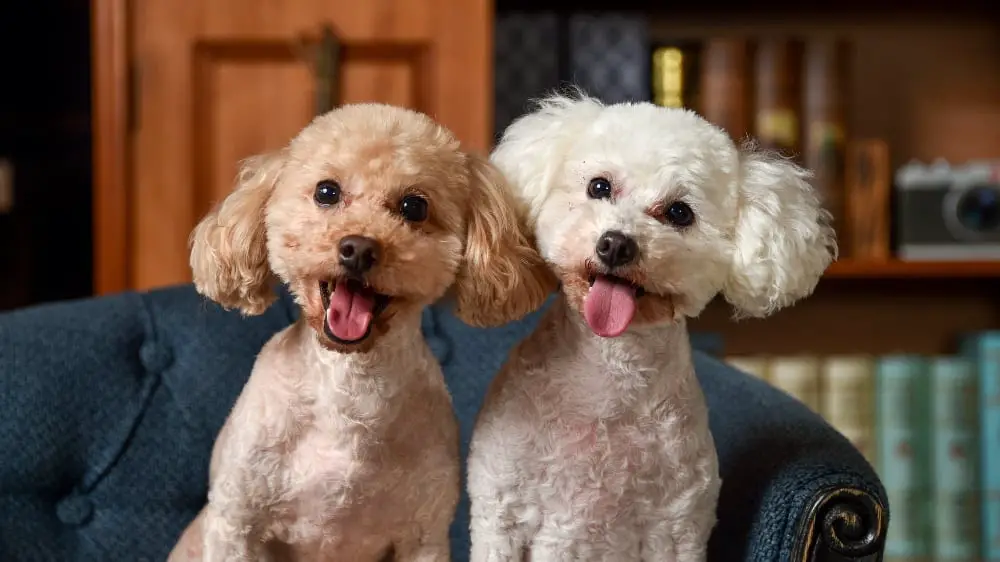
However, it’s important to note that excessive shedding or skin irritation could indicate an underlying issue, such as sebaceous adenitis. Regular visits to the vet and proper care of their poodle’s coat, curly coats, and skin are essential to keep your Poodle healthy and happy. Shedders and those with alopecia may require extra attention.
So, understanding the shedding habits of poodles and their curly coat is vital if you consider adding a poodle to your family. Proper grooming is essential to maintain the poodle’s coat. Stay tuned as we dive deeper into this fascinating topic! Also, don’t forget to schedule regular visits to the vet for your poodle’s overall health.
Table of Contents
- 1 Poodle shedding: How much do they shed?
- 2 Are Poodles Hypoallergenic?
- 3 The Truth about Poodles and Shedding:
- 4 Managing Poodle shedding: Tips for control
- 5 Caring for your Poodle’s coat: Regular combing:
- 6 Conclusion
- 7 Related posts:
- 8 Do Poodles Shed Their Puppy Coat?
- 9 Are Poodles Hunting Dogs
- 10 Poodle Puppies (20+ Perfect Pups)
- 11 Miniature Poodle: Breed Info & Characteristics
Poodle shedding: How much do they shed?
Poodles are known for their low-shedding tail, which sets them apart from other breeds. Their hair-like fur is the cause behind this minimal shedding. However, it’s important to note that the amount of shedding can vary depending on the size of the Poodle. Regular grooming can help prevent cuts and keep their tail in good shape.
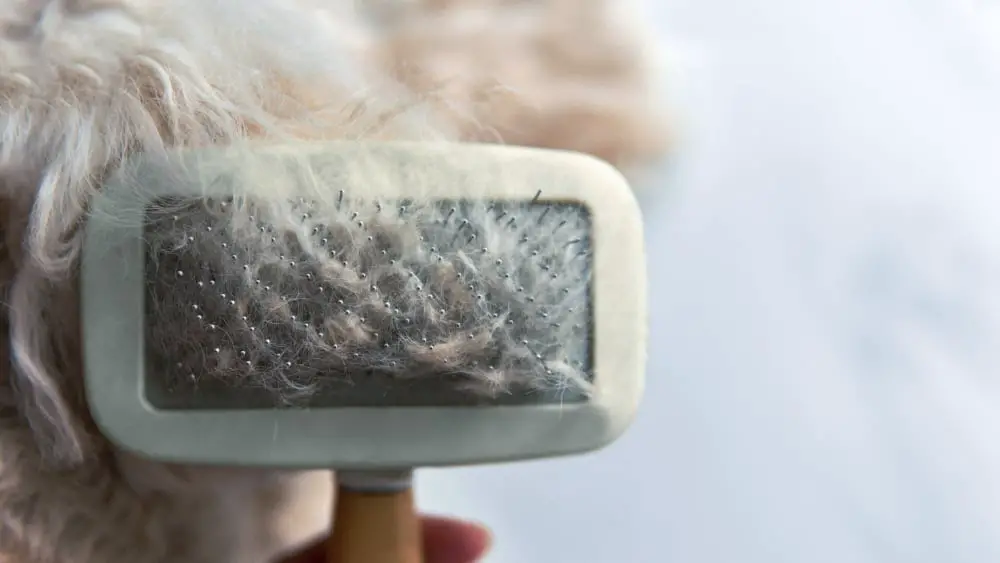
Here’s a breakdown of shedding in Poodles:
- Minimal Shedding: Poodles have a unique coat that resembles human hair more than traditional dog fur. This characteristic makes them an excellent choice for individuals with allergies or who prefer a cleaner home environment.
- Size Makes a Difference: The amount of hair a Poodle sheds can differ based on size. Standard Poodles tend to shed less compared to Miniature or Toy Poodles. If you’re looking for even less shedding, opting for a larger-sized Poodle might be the way to go.
- Regular Maintenance Required: While Poodles shed less than many other breeds, they still require regular grooming and Maintenance to keep their coat healthy and prevent matting. Regular brushing and professional grooming every few months will help manage loose hair and maintain its beautiful appearance.
- Poodle Mixes: It’s worth noting that if you have a poodle mix (such as a Labradoodle or Goldendoodle), shedding may vary depending on the traits inherited from the non-poodle parent breed. Some poodle mixes may shed more than purebred poodles, while others may inherit the low-shedding trait.
Understanding how much hair your poodle sheds is essential when considering this breed as your furry companion. With their minimal shedding and unique coat characteristics, poodles make an excellent choice for those seeking a low-maintenance pet without sacrificing style and elegance in their homes. The amount of hair a poodle will cut or cause to shed depends on the individual dog and its specific coat type.
Are Poodles Hypoallergenic?
Many believe that Poodles cause fewer allergic reactions in allergy sufferers due to their low-shedding coats. While no dog breed is completely hypoallergenic, Poodles are often a viable choice for those looking to cut down on allergens.
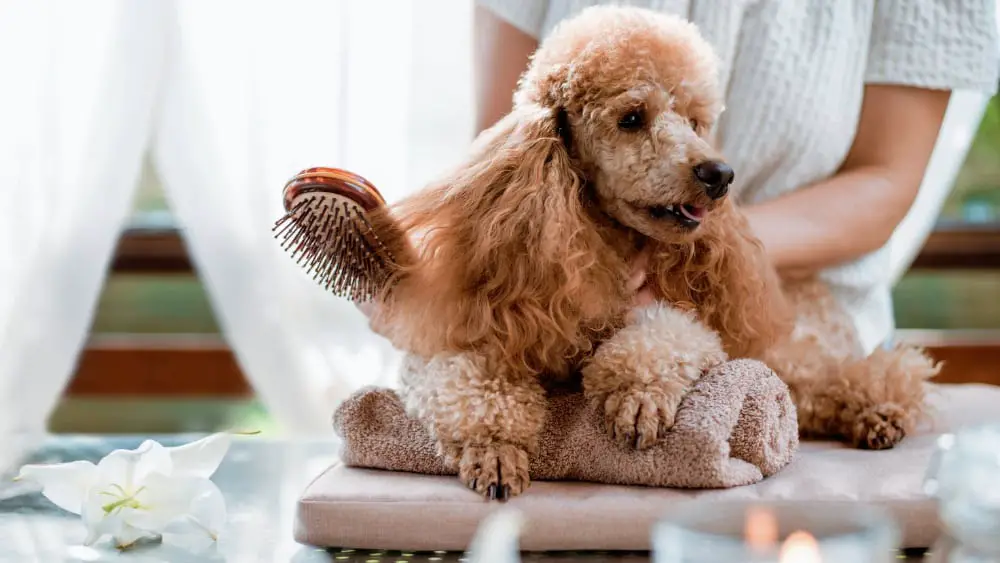
Poodles have gained a reputation as hypoallergenic dogs due to their unique coat characteristics that cause less loose hair and dander. Unlike other breeds that shed profusely, Poodles have hair-like fur that grows continuously, similar to human hair. This non-shedding trait can reduce pet allergies triggered by floating hair and dander in the house.
Owning a Poodle with its unique poodle coat can relieve allergy sufferers from common symptoms such as sneezing, itching, and watery eyes. The reduced shedding of these dogs, caused by their poodle’s coats, means fewer allergens in the environment, allowing individuals with allergies to coexist more comfortably with their furry companions. Additionally, regular grooming and haircuts can further minimize shedding.
It’s important to note that while Poodles have a low-shedding nature, some people may still experience mild allergic reactions despite the hypoallergenic qualities of their coats. These reactions can vary from person to person.
The American Kennel Club recognizes the Poodle as a low-shedding, hypoallergenic dog breed. However, potential owners must spend time with a Poodle before deciding. Interacting directly with the pup will help determine if allergic reactions occur, especially during seasonal shedding.
The Truth about Poodles and Shedding:
Contrary to widely held belief, all dogs shed, including Poodles. Shedding in Poodles occurs through hair breakage rather than continuous hair loss. Regular grooming can help minimize the appearance of shed hair in your home.
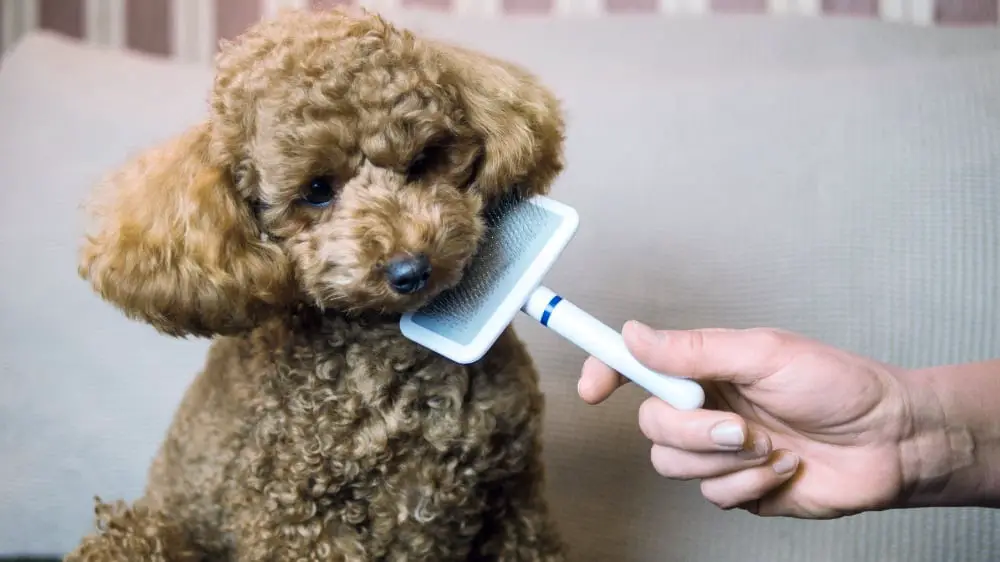
Poodles are often considered low-shedding dogs, but it’s essential to understand that they still shed. Here are a few key points to keep in mind:
- Low shedding, not no shedding: While Poodles are known as low shedders, this doesn’t mean they don’t shed at all. Like any dog breed, Poodles do experience some level of shedding. However, their curly and dense coat helps trap loose hairs, reducing the hair you may find around your house.
- Hair breakage instead of continuous hair loss: Poodle coats have tight curls that prevent loose hairs from falling out naturally, like other breeds. Instead of constant hair loss, shedding in Poodles often occurs when individual hairs break or get tangled within the coat. This can result in small clumps or mats that must be removed during grooming sessions.
- Regular grooming for minimal shed hair: Regular grooming is essential to keep your Poodle looking their best and minimize the appearance of shed hair in your home. Brushing their coat regularly helps remove loose hairs before they have a chance to accumulate on furniture or floors.
By following these simple steps and understanding the nature of shedding in Poodles, you can effectively manage their fur and maintain a clean-living environment. Remember that while Poodles may be considered low shedders compared to other dog breeds, regular grooming is still necessary to keep their coats healthy and free from mats or tangles.
So if you’re considering a Poodle as your furry companion but worried about excessive shedding, rest assured knowing that with proper care and Maintenance, you can enjoy the company of these beautiful dogs without having fur all over your home.
Managing Poodle shedding: Tips for control
Regular brushing is vital. This helps remove loose hairs and prevents matting, keeping your furry friend looking fabulous.
Bathing your Poodle with appropriate products can also play a role in reducing excess dander and maintaining a healthy coat. Use gentle shampoos designed specifically for dogs to avoid skin irritation.
In addition to grooming practices, providing your Poodle with a balanced diet is crucial. A diet rich in omega fatty acids promotes a healthy coat and minimizes shedding. Consider incorporating foods such as salmon or flaxseed oil into their meals.
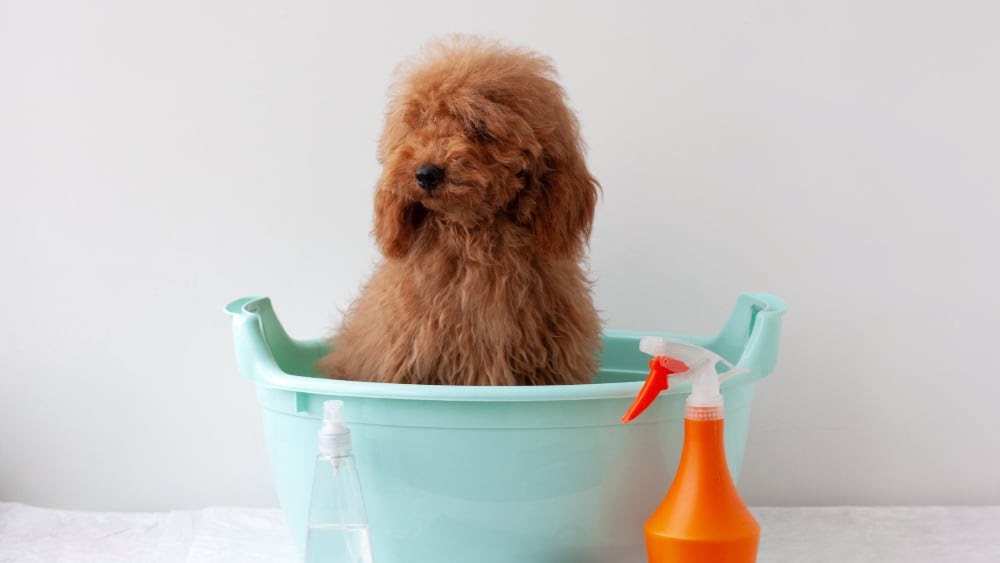
Caring for your Poodle’s coat: Regular combing:
Combining your Poodle’s coat is essential to maintain a healthy, tangle-free appearance. By following these simple steps, you can ensure that your furry friend’s curly coat remains in top shape:
- Use a slicker brush or comb designed for curly-haired breeds like the Poodle. These tools are perfect for detangling their unique fur without causing any discomfort.
- Regular combing helps prevent tangles and mats from forming. You can keep your Poodle’s coat looking fabulous by dedicating just a few minutes daily to grooming.
- Not only does regular combing keep their fur neat, but it also stimulates blood circulation in the skin. This promotes overall coat health and ensures your Poodle stays comfortable and happy.
- If you’re unsure how to groom your Poodle properly, consider seeking professional help from a groomer experienced with this breed. They can guide you on the best techniques and recommend suitable shampoos for maintaining a healthy coat.
- Remember that poodles have single and double coats, depending on the breed variation. Understanding which type of coat your Poodle has will help you choose the appropriate grooming methods.
- While grooming, look for any signs of fleas or other parasites. Regular combing allows you to spot these unwelcome guests early so that proper measures can be taken promptly.
- If you notice excessive shedding or hair loss (alopecia), consult a veterinarian who can provide guidance tailored to your Poodle’s needs.
You’ll keep your beloved Poodle looking stylish and feeling their best by incorporating daily brushing into your routine and staying attentive to their grooming needs.
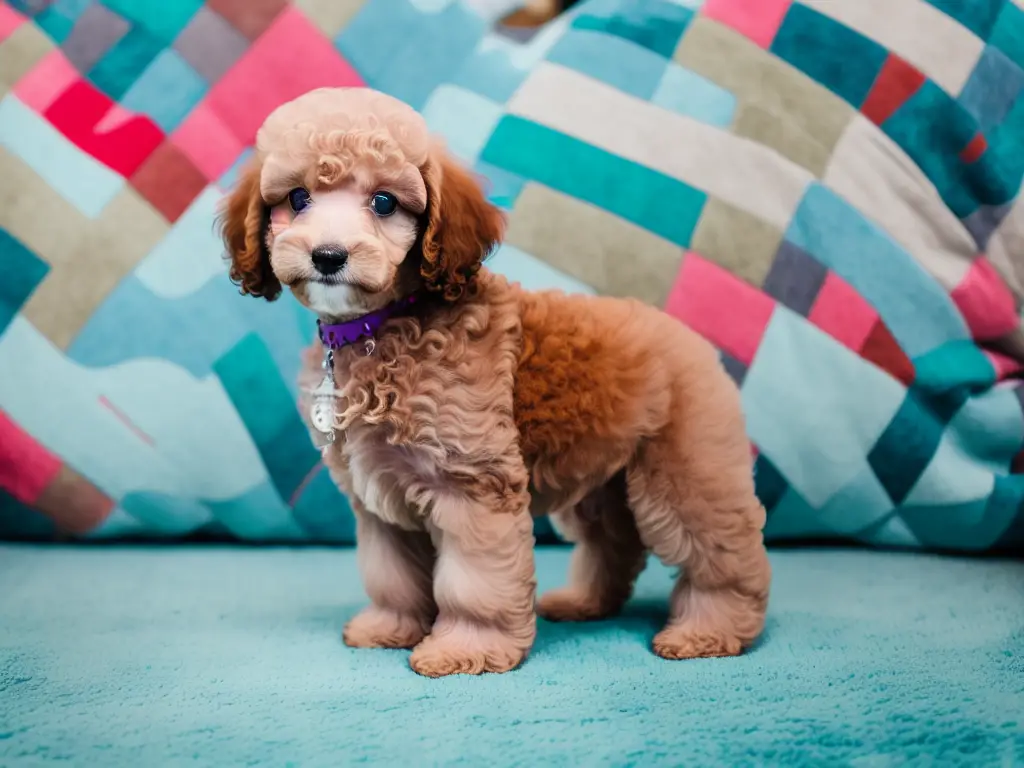
Now let’s dive into some more tips on caring for different aspects of your Poodle’s well-being!
Conclusion
In conclusion, understanding poodle shedding is essential for anyone considering bringing a poodle into their home. Poodles are known for being low-shedding dogs, making them a popular choice for individuals with allergies or those who prefer a cleaner living environment. While all dogs shed to some extent, poodles shed very minimally and are often considered hypoallergenic.
It is important to note that the amount of shedding can vary among individual poodles and depends on genetics, health, and grooming practices. Regular grooming and proper care can help minimize shedding even further.
To manage Poodle shedding effectively, consider implementing tips such as regular brushing to remove loose hair, a balanced diet to promote healthy skin and coat, and ensuring your Poodle receives routine veterinary care.
Taking good care of your Poodle’s coat helps control shedding and keeps their fur in optimal condition. Regular combing helps prevent matting and tangling while promoting healthy hair growth.
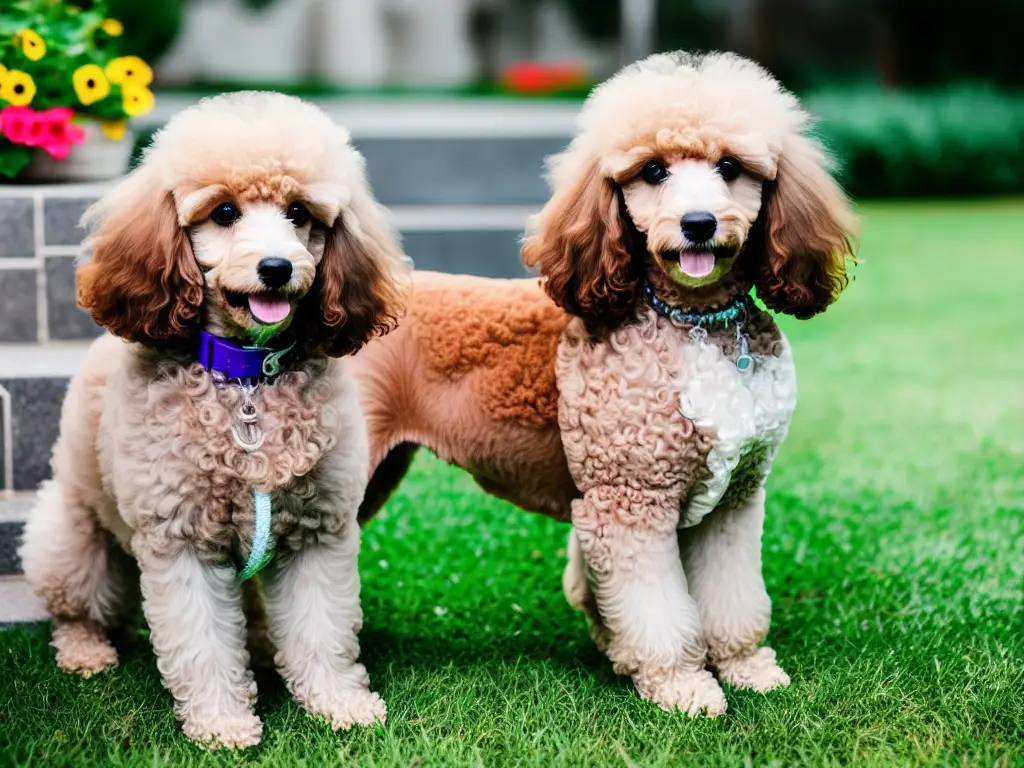
Remember that every dog is unique, so observing your Poodle’s needs is crucial. If you have any concerns or questions about your Poodle’s shedding patterns or overall health, consult a veterinarian specializing in canine care.
So why wait? Embrace the joy of having a furry companion without worrying about excessive shedding by considering adding a lovable poodle to your family!
Are there different types of poodles based on shedding?
Poodles come in various sizes (standard, miniature, toy) but do not have different types specifically related to shedding. The amount of shedding may vary slightly between individuals due to genetics and overall health.
Can I prevent my Poodle from shedding completely?
While you cannot eliminate shedding in any dog breed, including poodles, you can significantly reduce it through regular grooming routines such as brushing and trimming their coat appropriately.
Are poodles suitable for individuals with allergies?
Poodles are often considered hypoallergenic, making them a good choice for individuals with allergies. However, it’s important to note that everyone’s sensitivity to allergens can vary, so spending time with a poodle beforehand is recommended.
How often should I groom my Poodle to manage shedding?
Regular grooming is crucial for managing shedding in poodles. Brushing your Poodle’s coat at least every other day and scheduling professional grooming sessions every 4-6 weeks is recommended.
Can diet affect the amount of shedding in poodles?
A balanced and nutritious diet can contribute to a healthy coat and minimize shedding in poodles. Consult with your veterinarian to ensure you provide the proper nutrition for your furry friend.